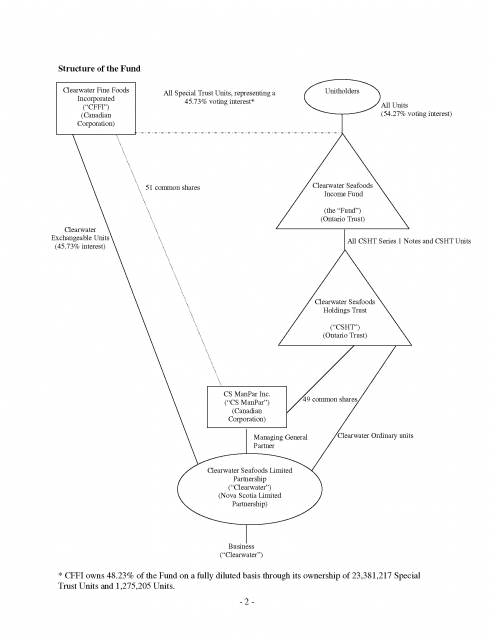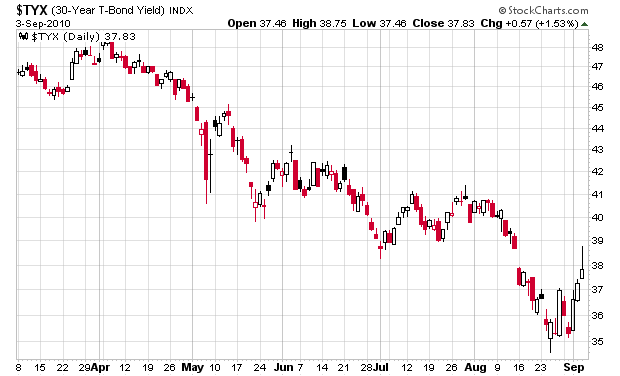Clearwater Seafoods Income Fund (TSX: CLR-UN.TO) is a financially distressed entity. The fund has an equity interest in a limited partnership. The limited partnership is the operating business that sells seafood. The units are trading at around 80 cents, with a market capitalization of about $23 million. The trust has stopped paying distributions since 2007 and is not likely to pay distributions for a long, long time.
Whenever investing in an income trust, they typically have more complicated ownership structures than corporations. You can usually get a summary of the structure in the first few pages of the annual information form. I have extracted a diagram which illustrates the relationship between the fund and the operating entity:
Whenever I see something like this, I think negatively since usually such structures exist to give certain (usually founding) entities control over the operating assets, but to distribute the economic interests to other parties that is not in proportion to voting interests. In this case, the unitholders of Clearwater Seafoods Income Fund are simply there for the ride by virtue of having a 54% voting interest in a very indirect say as to what goes on at the operating level. As a result, an investor would need extra compensation (i.e. higher reward) for the extra risk that they are taking (the risk that their interests are not going to be in alignment with the people holding the puppet strings).
Clearwater also has a debt problem – as of June 30, 2010 the operating entity has about $218 million in debt outstanding, and of this debt, the trust has lent the operating entity $45 million in exchange for partnership units (they have also done this in other instances with different terms and maturity dates). This loan matures in December 31, 2010. The operating entity also does not generate enough cash, nor are there other assets readily available to pay off the debt. As a result, the company will have to find external financing or find some method to recapitalize the debt.
There is also another $11.3 million loan that is due in September 2010.
In the management discussion and analysis, we have the following paragraph:
In December 2010 Clearwater Seafoods Income Fund has $45 million of convertible debentures that come due. These funds were invested by the Fund in Class C Units issued by Clearwater with similar terms and conditions, including maturity in December 2010. Clearwater also has approximately 1.3 billion in ISK denominated bonds, including CPI and accrued interest that come due in September 2010 (approximately Canadian $11.3 million at July 3, 2010). Clearwater is currently investigating refinancing alternatives and plans to refinance both before the respective maturity dates.
When we look at the market for the $45 million debenture, we see it is trading at 88.5 cents on the dollar. So the market is heavily betting that the debt will be refinanced at relatively favourable terms to debt investors. Recapitalization, however, appears to be out of the question since it would require relinquishing control to the debtholders and the current market value of the units is far too low to make a direct conversion worthwhile. Going into bankruptcy protection might occur if the debtholders and trustees cannot come to a mutually equitable arrangement.
Given the lackluster cash flow from operations, the complexity of the trust and underlying operating entities, and obvious credit risk, I will be watching this one purely from the sidelines to see how this mess gets resolved. My cursory look at the situation would suggest that the debt and equity are both overvalued.

